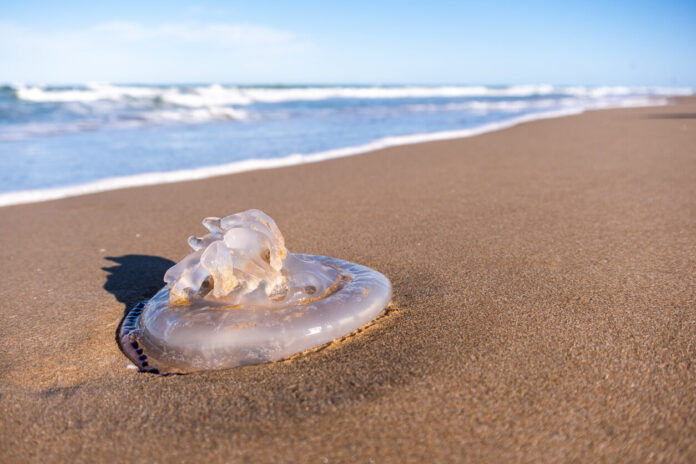Since the first weeks of June 2023, the mass arrival of jellyfish near the French coast has not gone unnoticed. In summer, the warming of the waters contributes to their growth and reproduction. “Indeed, many people have come forward. However, there is nothing abnormal in this season, there are still a lot of jellyfish in June”, tempers Elvire Antajan, researcher in zooplankton ecology at Ifremer, for 20 minutes.
Moreover, the prevailing winds of the last few days are pushing them towards the beaches where they are stranded. “Jellyfish are very sensitive to the surface current and this pushes them towards our coasts, which results in significant strandings in places”, specifies the researcher in zooplankton ecology. So, a sting quickly arrived. In this case, what should be done?
According to the Regional Health Agency of Brittany, when a jellyfish stings, stinging filaments can remain attached to the skin. They must then be removed with tweezers or with gloves without crushing them. Removal can be made easier by applying shaving cream or dry sand. Then, you have to “scrape the whole thing (tentacles and foam/sand) on the skin with a rigid cardboard or the back of a credit card”. Thereafter, the skin should be rinsed with seawater or saline solution, without rubbing, for about thirty minutes.
To soothe the pain, it is necessary to apply a fatty substance, as in the case of a burn. The lesions may remain for several weeks but the pain should subside after a few hours. If the pain persists, consult a doctor or pharmacist.
Discover in our slideshow below all the departments concerned by a massive presence of stranded stinging jellyfish, according to Meduseo.















